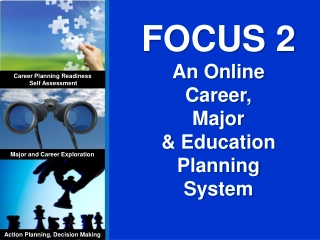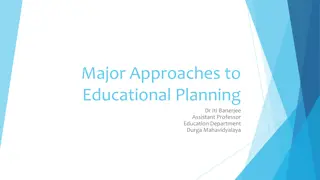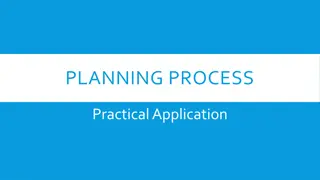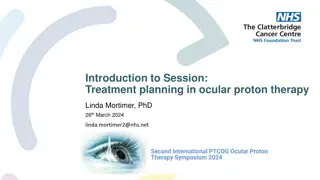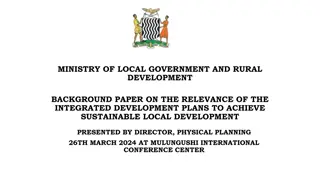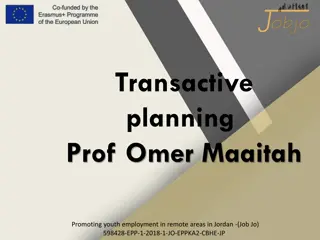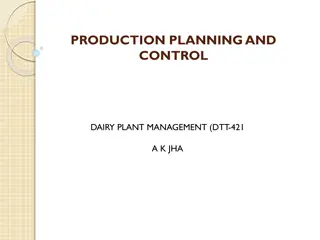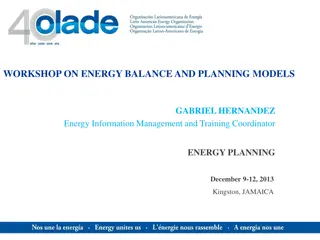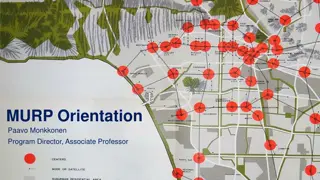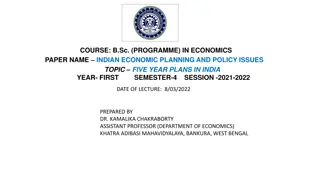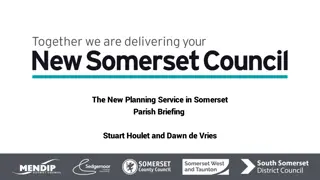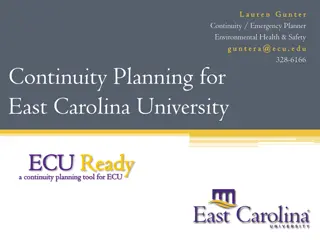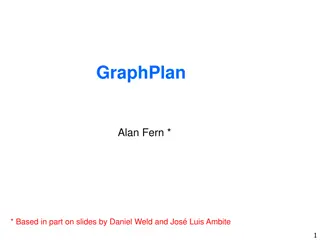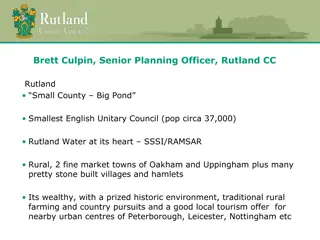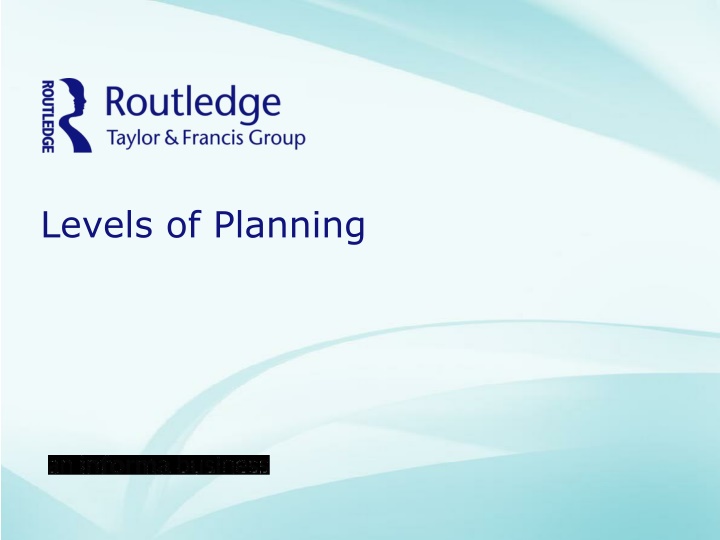
Effective Classroom Planning Strategies for Teachers
Explore the essential levels of planning in education, including long-term planning, procedures, curriculum development, and unit planning. Learn how teachers can effectively structure their lessons, create curriculum maps, and establish classroom procedures for a successful educational journey.
Uploaded on | 2 Views
Download Presentation

Please find below an Image/Link to download the presentation.
The content on the website is provided AS IS for your information and personal use only. It may not be sold, licensed, or shared on other websites without obtaining consent from the author. If you encounter any issues during the download, it is possible that the publisher has removed the file from their server.
You are allowed to download the files provided on this website for personal or commercial use, subject to the condition that they are used lawfully. All files are the property of their respective owners.
The content on the website is provided AS IS for your information and personal use only. It may not be sold, licensed, or shared on other websites without obtaining consent from the author.
E N D
Presentation Transcript
Table of Contents Levels of Planning Long-Term Planning Procedures Curriculum Short-Term Planning Weekly Structure Daily Plans Challenges to Lesson Planning
Teachers . . .need to have a sense of where they are going, why they want their students to go there, and how they and their students are going to get there (National Academy of Education, 2005, p.16). LONG-TERM PLANNING
Long-Term Planning: Procedures Procedures: Help classrooms run smoothly and support students independence Should be intentionally determined by the teacher Should be established at the beginning of the year Can be traditional or creative find what works for you (and your students)
Areas in Need of Classroom Procedures When/how to sharpen pencils How to transition to a group area Lunch preferences How to walk in the hall How to turn in papers What information to include at the top of papers
Long-Term Planning: Curriculum Year-Long Planning Outlining and organizing all of the information expected to be taught in a given school year; remains relatively stable from year to year Curriculum maps Pacing guides Standards frameworks Grade-level benchmarks Scope and sequence
Long-Term Planning: Curriculum Unit Planning Organizing standards into manageable pieces of related material Lasts 2 to 9 weeks May or may not integrate subject areas Often missing from classroom instruction
Unit Planning Big Idea and Thematic Instruction Identify related themes/generalizations in the standards Select appropriate associated resources Plan instructional activities to support the content Big Idea planning typically remains focused in a content area (the Revolutionary War, our solar system, folk tales) Thematic Instruction is focused on integrating content areas around a broader theme (adaptation, courage, community)
Unit Planning Backwards Design (Wiggins & McTighe, 2005) The student will be able to ______. Identify Desired Results As shown on _____ assessment. Determine Acceptable Results Learning will occur through ___. Plan Learning Experiences and Instruction
Unit Planning: Warnings! Activity Focus: Putting together lots of fun activities around a topic and calling it a unit, despite the lack of focus on particular learning goals/standards Coverage Focus: Moving through instruction in almost lockstep fashion in order to ensure that everything is covered
Unit Plan Template Unit Plan Subject Area: Standards to be addressed: Central focus of the unit: Common errors and/or misunderstandings to be addressed: Knowledge, Skills, and Procedures needed: Academic language demands: language functions language forms essential vocabulary, symbols, and/or phrases Resources and materials needed: Evaluation: How will you know if each student understands the central focus of your unit? Informal assessments: Formal assessments:
Short-Term Planning: Weekly Schedule Out of classroom time generally dictated at the school level Largest blocks of time generally dedicated to literacy and math instruction Science and social studies fit in smaller spaces and/or are taught on alternate days or alternating units Be flexible
Short-Term Planning: Instructional Routines Routines are recurring events within a schedule designed specifically to: Decrease complexity Minimize confusion Prevent loss of instructional time (Ryan & Cooper, 2012)
Instructional Routine Comparison Monday Tuesday Wednesday Whole Group Story Share and Vocabulary Work Guided Reading and Work Station Rotations Guided Reading and Work Station Rotations Classroom 1 Classroom 2 Reader s Workshop Reader s Workshop Reader s Workshop
Short-Term Planning: Daily Plans Lessons should be structured around a specific objective or two Some lessons last 5 to 10 minutes, whereas others last 3 days (or more!) Should always include means of assessing student progress toward the objective
Short-Term Planning : Objectives Observable behavior (think of Bloom s Taxonomy) Which one is an appropriate objective? After reading Memoirs of a Goldfish, students will be able to independently identify the setting, main character, and problem of the story in writing. Students will understand the parts of a story after reading Memoirs of a Goldfish.
Short-Term Planning: Assessment Group assessment is not enough; assessing individual performance is key. Assessment should be directly related to the objective. Assessment should be formatted in a way that matches the expectations of the objective.
Short-Term Planning: Resources and Materials Not all have equivalent instructional value. Useful resources and materials are most easily found after the objectives have been determined and assessments have been developed. (Remember the principles of backwards design?) Resources and materials should be designed and selected with your particular students in mind.
Short-Term Planning: Lesson Structure Modeling ( I Do ) Guided Practice ( We Do ) Small-Group Guided Practice ( You all Do ) Partnered Guided Practice ( You Two Do ) Independent Practice ( You Do )
TEACHER RESPONSIBILITY I do it Focus Lesson Guided Instruction We do it You all do it/ You two do it Collaborative You do it alone Independent STUDENT RESPONSIBILITY Gradual Release of Responsibility Model (based on Pearson & Gallagher, 1983)
Sample Lesson Plan Template Lesson Plan Standard: Objective(s): Teacher Knowledge of Students: students learning difficulties (academic, social, emotional) student interests in instruction students individual needs Introduction: Background Knowledge: Connections to students lives Motivation/Engagement Resources and Materials: Academic Language Requirements: Forms of Assessment: Instructional Procedures: I Do (Modeling, Showing, Demonstrating) We Do (Guided Practice) You Do (Independent Practice and Application) Closure: Review in relation to objective Set the stage for next steps
Challenges to Effective Lesson Planning Balancing breadth and depth Incorporating both cognitive and affective goals for learning Avoiding fragmentation Striving for both relevance and rigor (The National Academy for Education, 2005)
More Challenges to Effective Lesson Planning Use of instructional time Textbooks Conformity vs. Collaboration
Summary Year-long planning, unit planning, and daily planning are each critical. Planning never ends; it is an essential part of the instructional cycle. Planning forces teachers to think about what needs to be accomplished and how to most effectively use time to make that happen. Planning is not the same as finding activities. Lesson plans are works in progress that must be adapted based on students needs and reactions to instruction.
References National Academy of Education. (2005). A good teacher in every classroom: Preparing the highly qualified teachers our children deserve. San Francisco, CA: Jossey-Bass. Pearson, P. D., & Gallagher, M. C. (1983). The instruction of reading comprehension. Contemporary Educational Psychology, 8, 317 344. Ryan, K., & Cooper, J. M. (2012). Those who can, teach (13th ed.). Belmont, CA: Wadsworth, Cengage Learning. Wiggins, G., & McTighe, J. (2005). Understanding by design. Upper Saddle River, NJ: Pearson.

